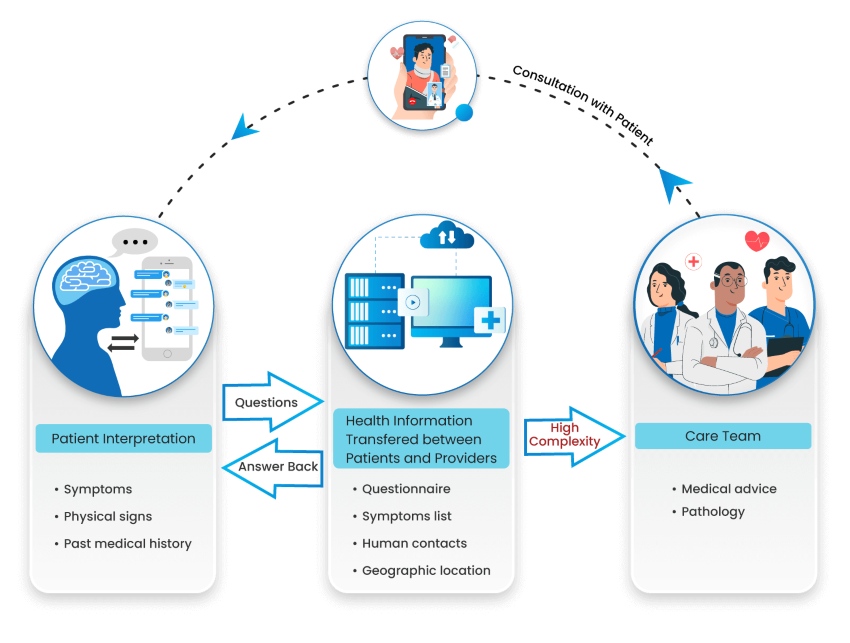Business Challenges
- High Wait Times and Limited Access to Care
- Challenges in Remote Chronic Disease Management
- Inefficient Healthcare Resource Allocation
- Limited Patient Engagement and Information Access
Solution
- AI-Powered Virtual Triage for Timely Patient Care
- Real-time Remote Monitoring with AI-Enabled Devices
- Enhanced Patient Engagement with AI-Driven Chatbots and Virtual Assistants
- Early Detection and Proactive Interventions through AI Monitoring
- Optimized Healthcare Resource Allocation with AI
- Personalized Treatment Plans Through AI Analysis of Medical Data
Values
- Implementing AI-powered virtual triage reduced patient wait times by 40%.
- AI-enabled remote monitoring led to a 30% increase in early detection.
- Leveraging AI to analyze medical data improved treatment effectiveness by 30% and reduced side effects by 20%.
- AI chatbots and virtual assistants boosted patient engagement by 35%.
Solution Implementation
To address the client's needs for a value-based AI telehealth system, we implemented a comprehensive solution incorporating advanced AI features.
1. Virtual Triage
Implemented AI algorithms to analyze symptoms and patient data, prioritizing cases based on urgency. This optimized healthcare provider workflows and significantly reduced wait times, enhancing patient satisfaction.
- AI Algorithms
- Prioritizing cases
- Optimized healthcare provider workflows
2. Remote Monitoring
Deployed AI-powered devices and wearables to collect real-time patient data, such as heart rate, blood pressure, and glucose levels. This helps to identify and manage chronic conditions early on and also enables proactive interventions and personalized care plans through real-time data analysis, reducing the need for frequent in-person visits.
- AI-powered devices and wearables
- Proactive interventions
- Personalized care plans
3. AI in Healthcare Chatbots and Virtual Assistants
Deployed chatbots and virtual assistants to handle patient inquiries, provide basic medical advice, and even connect patients with a doctor or other healthcare provider if needed. This AI-powered virtual assistant provides patients with 24/7 access to medical advice and support. This improved patient engagement and access to information, relieving healthcare staff of routine tasks.
- Chatbots and virtual assistants
- 24/7 access to medical advice
4. Personalized Medicine
Leveraged AI to analyze patients' genetic and medical data, developing personalized treatment plans. This improved the effectiveness of treatments and reduced the risk of side effects, providing tailored healthcare solutions to each patient.
- Personalized treatment plans
- Reduced risk of side effects
5. Efficient Resource Allocation
Implemented AI-driven resource management tools to optimize the allocation of healthcare resources, ensuring timely care for patients with critical conditions. This resulted in reduced wait times and enhanced overall patient satisfaction.
6. Early Detection and Intervention
Facilitated early detection of deteriorating conditions through continuous monitoring of patient data. This allowed for timely interventions, improving patient outcomes and reducing the severity of potential health issues.

Business Value
Improving UX
Helped being on the same page with the patients. We improved User experience and made the accuracy of the results higher.
Developing All Flow
Helped in having a competitive advantage. We chose a proper tech stack, developed all flow from A to Z and implemented in real life.
Optimization
Increasing operational speed by 2 times. Now all data in one place. Increasing operational speed by 2 times. Now all data in one place.
Transform Your Business with Powerful Insights Enabled by Cutting- Edge Generative AI





